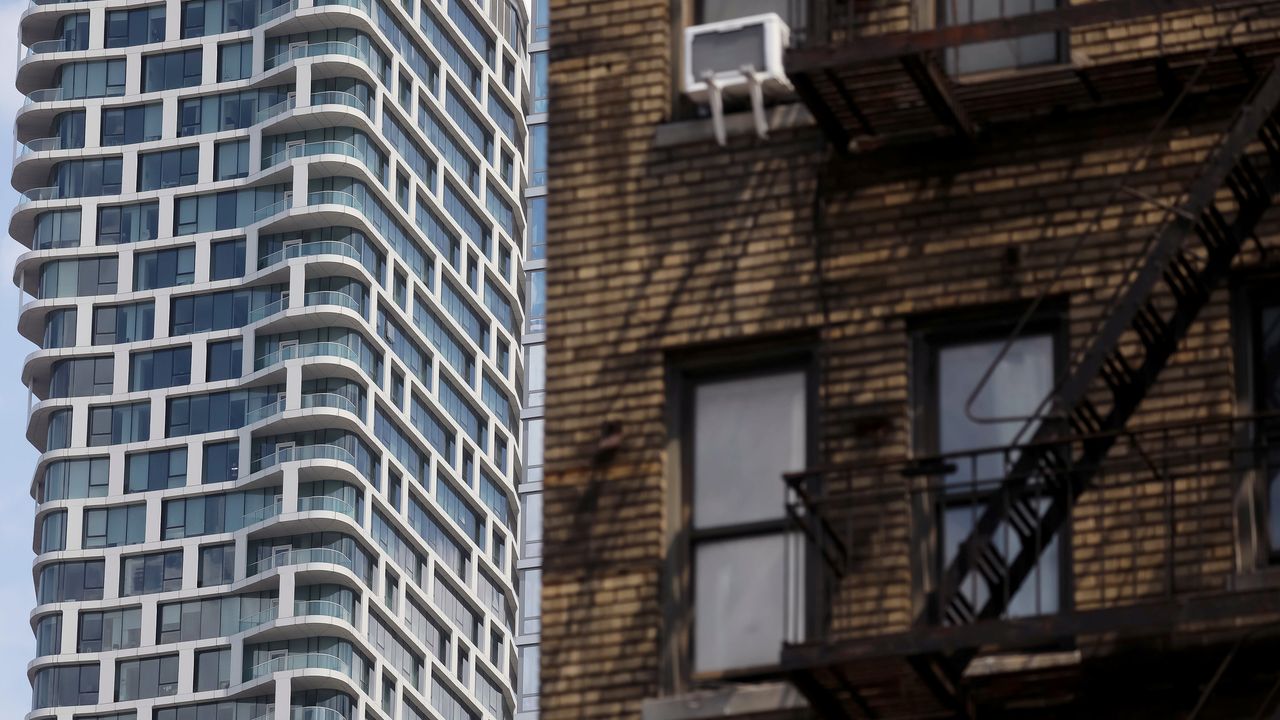The previous tenant paid nine hundred and three dollars a month. (A steal!) On the free market, the unit could fetch three thousand, easy. (Lee said he had to call it a “de-facto” two-bed, because legally, a living room has to have windows.) But he estimated that it would cost him a hundred and twenty thousand dollars to make the place livable, and, under the current rent-stabilization laws, the most he could charge would be twelve hundred a month—which he said just about covers the operating cost of the apartment but not the renovations.
We continued the tour. “I’ll probably get rid of this,” Lee said, waving at the paint around some windows, “because this is all lead.” Given how much lead he was pointing out, I asked Lee if it was safe for us to even be there. “That’s a good question,” he said. “I think it’s O.K. It’s not really chipped off or anything like that.” He peered at a wall. “I don’t know if you have an actual monitor to see if there’s any dust?” he asked. I told him I didn’t. “This is par for the course for Chinatown tenement buildings,” he said. “There are some buildings that have the toilet in the hallway.” I asked him about the children’s scooter on the ground. “I don’t know how that got there,” he said.
Under current laws, landlords can raise the rent if they make improvements to a vacant apartment, but the amount is capped at fifty thousand dollars, spread out over fifteen years. (Before 2019, a landlord could charge a twenty-per-cent vacancy rise when a tenant moved out, and there was no fifty-thousand-dollar cap.) When I asked Lee why he hadn’t renovated the apartment earlier, he said that it was because of the previous tenant. “You have to put them up—if you take them out to renovate,” he said. But the apartment had now been vacant for three years. Why was it still unrenovated and unrentable? “There’s no incentive economically,” he said. “You lose money.”
Approximately a million apartments in New York are rent-regulated, and living in one is sort of the dream. The rules are often arcane and not necessarily understood by the people who live in these places. (One renter in Harlem recently discovered, after twenty years of paying market rents, that his apartment was rent-stabilized.)
There are two kinds of rent-regulated apartments: rent-controlled and rent-stabilized. The popular conception of a rent-regulated apartment—a walkup in Manhattan, somehow still leasing at decades-old prices—is most likely a rent-controlled one. (On “Sex and the City,” Carrie Bradshaw’s fictional one-bedroom is seven hundred and fifty dollars a month and rent-controlled; in “And Just Like That . . .” the new tenant puts in a dividing wall so she can split it with a roommate.) But rent control was phased out in 1971, and now there are only twenty-four thousand rent-controlled apartments in the city. (These units can be passed down to family members, but generally when a rent-controlled tenant moves out, the apartment becomes rent-stabilized or hits the free market.) Meanwhile, there are 996,600 rent-stabilized apartments, whose rents are dictated by the nine-person Rent Guidelines Board. Under de Blasio, rents were frozen three times, and no single-year increase was above 1.5 per cent; under Adams, they rose 3.25 per cent in 2022, three per cent in 2023, 2.75 per cent in 2024, and will rise three per cent again this year.
Lee’s building has eight apartments that more or less tell the story of rent regulation across the years. One is rent-stabilized but vacant; six are rent-stabilized and occupied; and one, on the second floor, is market rate. That apartment, he told me, used to look like his vacant one—tub in the kitchen, lead in the walls. In 2017, Lee spent more than a hundred thousand dollars to renovate it, which allowed him, under previous laws, to destabilize it. It’s now renting out for thirty-five hundred dollars a month, as a two-bed, to a couple of Wall Street guys who moved from California. (“Very reasonable for Manhattan,” Lee said.) His other rent-stabilized apartments, which are similar in size, go for around a thousand dollars or less. He’s done some minor renovations—“I put the shower, the bathroom, and sink together, nothing dramatic”—but decided to keep them rent-stabilized. Lee opposes Mamdani and the proposed rent freeze, but he said he doesn’t oppose rent-stabilization over all. He was born in New York and grew up in the Two Bridges neighborhood. He told me, “I wanted to keep a lot of the Chinatown tenants, the working families, here.”

